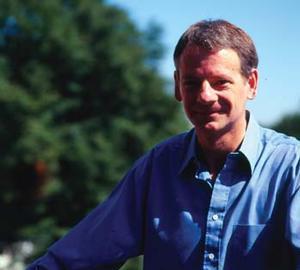But Stevens certainly doesn't regret his studies at Bath. "It was a sandwich course so for the first three years we spent summers working in industry. The first year on a building site; second in a design office; and third in a research department."
He says that the site experience was invaluable: "It gave me an appreciation of how things are built, and how you can't design to the nth degree. You have to design to make it buildable when they're knee-deep in mud."
Stevens' first job was with a medium-sized Croydon m&e consultant. He joined Fordhams in 1987. "It's a very interesting firm to work in and I really enjoy the work." The consultancy is well known for a rather unconventional approach. "We believe it's important that we don't just throw services into the building; we think about incorporating them so that they are sympathetic with the building."
Milestone projects for Stevens include the BRE low energy office, which made use of the thermal mass of the structure allied with night cooling. More recently, he worked on the Poole Lighthouse arts centre which won BSj's Project of the Year award 2003.
Stevens says that because of the Fordham preferred way of working, it's important to have close relationships with clients. "You have to start with a client who's fairly keen on a sustainable building. The architect can take them so far down that route, and we can help."
Naturally, this means being in at the start of a project. "If the architect comes to us with the building laid out and pretty much designed, there's really little effect we can have on the fabric of the building. And for us the fabric is part of the plant because we use it to provide some of the heating or cooling," says Stevens.
Max Fordhams is a consultancy with a mission to bring sustainability to all the buildings its engineers work on, landmark project or not.
But as Stevens points out, there is a price to pay for this. "Projects which are already designed before the architect approaches us are more profitable – you only design the services once to go in. Whereas, if we get a building very early, it is more interesting because we can affect the shape but we usually go through several iterations, which are less profitable."
It also has to be said that avoiding mechanical cooling isn't always the most predictable approach, either. "It's seat of the pants stuff. You are in the lap of the gods in that it is all to do with what the weather's doing. If you've got it wrong, you can't up the chiller or pump duty. It is the fabric of the building that's used to control the environment, and that's it. It is very interesting though!"
Stevens says that while technology like cfd can help, it is experience that really pays off when designing naturally ventilated buildings. "It helps if, when you're talking to the client trying to explain this weird science, you can say 'here's one I did earlier'. It gives the client some comfort that the science works."
While Fordhams is seeing more clients who come to them looking for a sustainable solution, Stevens says that it does sometimes feel like an uphill struggle. "Air conditioning is becoming ubiquitous throughout society. You buy a cheap car and it's got air conditioning! That is not the way to meet Kyoto requirements. Building Regulations are making a start."
But he is realistic about what clients can be expected to do. "Clients ask for a sustainable solution, and money does come into it. Our job is to give them value for money."
The idea is to use appropriate technology, but always to view the building itself as part of the environmental strategy, "because it's cheap, if not free."
Looking to the future, like many in the industry Stevens is concerned for the image of engineers in the UK.
"In Germany engineer means something. Here, everyone's an engineer. We need to get into the classrooms and get building services known."
Source
Building Sustainable Design























No comments yet